
All categories
Featured selections
Trade Assurance
Buyer Central
Help Center
Get the app
Become a supplier

(913 products available)
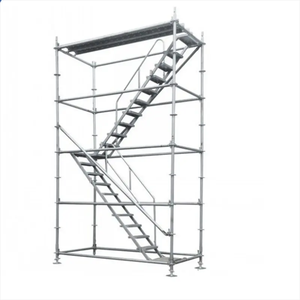



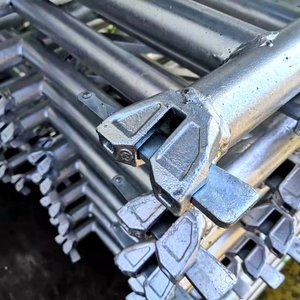
























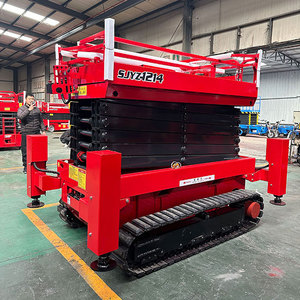














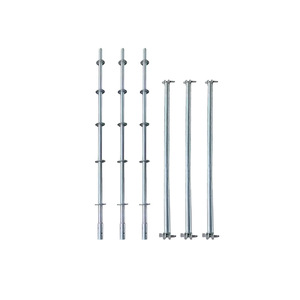
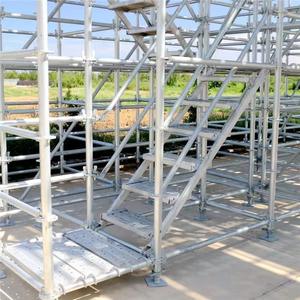


Refinery scaffolding is an essential component in the oil and gas industry. It provides temporary platforms for workers to perform maintenance, inspection, and construction tasks in refineries. There are different types of refinery scaffolding, including:
Steel Scaffolding
Steel scaffolding is commonly used in refinery projects due to its strength and stability. It is usually made of galvanized steel, which offers resistance to corrosion. This type of refinery scaffolding is suitable for heavy loads and high-rise applications in the refinery. It enhances worker safety due to its robust construction. Steel scaffolding is easy to assemble and disassemble, thus reducing downtime during installation.
Aluminum Scaffolding
This type of scaffolding is lightweight. Aluminum scaffolding is designed for applications where mobility and ease of movement are required. It enables frequent repositioning and enhances work efficiency. Additionally, it provides excellent resistance to rust and is ideal for use in humid refinery environments. Aluminum scaffolding can be adapted to various refinery structures and configurations. It ensures high levels of strength and stability.
Keyword Rolling Scaffolding
Keyword rolling refinery scaffolding consists of a metal framework supported by caster wheels. The wheels have locking mechanisms to ensure stability and safety when the scaffold is stationary. This type of scaffolding is ideal for tasks that require frequent movement across a work area. It is suitable for maintenance and inspection tasks in refineries. It improves work efficiency by allowing workers to move the platform as needed.
Kwikstage Scaffolding
Kwikstage is a modular scaffolding system. Its components include standards, ledgers, diagonal braces, platforms, couplers, and accessories. It is constructed from high-strength steel or aluminum. Kwikstage scaffolding is known for its quick assembly and disassembly. It has a locking mechanism that ensures rigid connections between components. This type of scaffolding provides flexibility in design and configuration. It is suitable for different refinery applications and structures.
Cuplock Scaffolding
This type of scaffolding consists of a system of standards, ledgers, and fittings. It is designed with a unique locking mechanism. The connection is formed by a cup-shaped socket that provides stability and strength. Cuplock scaffolding is suitable for heavy-duty applications. It can withstand harsh conditions in the refinery. This type of scaffolding is durable and can be used multiple times. Additionally, it offers excellent load-bearing capacity and wind resistance.
To understand the many functions and features of refinery scaffolding, here is an overview:
Support Framework
Refinery scaffolding is a support system that offers a secure platform for workers, tools, and materials. It enables workers to carry out tasks at different heights and levels safely.
Access and Mobility
Scaffolding enhances access and mobility on-site. Scaffold structures allow workers to move, access different areas, and perform tasks efficiently. Scaffold structures improve project productivity and reduce delays.
Material and Load Capacity
Refinery scaffolding is manufactured with high-strength materials like aluminum and steel. This ensures longevity, safety, and support. The materials used in constructing refinery scaffolding make them lightweight and easy to transport and assemble.
Adjustability and Customization
Refinery scaffolding is adjustable and customizable. This ensures it is suitable for different tasks and project requirements. Its components are adjustable, allowing it to fit uneven surfaces and varying height requirements.
Safety Features
Numerous safety features are built into refinery scaffolding to protect workers and enhance operations. Safety features include guardrails, anti-slip platforms, outriggers, and safety pins. These elements boost worker confidence and lower accident rates.
Assembly and Dismantling
Refinery scaffolding is simple to assemble and disassemble. Its design features enable the safe and efficient construction of scaffold structures. This allows for the quick adaptation of the scaffold to different project needs and site conditions.
Types of Scaffolding
There are various types of refinery scaffolding, each serving unique functions. Single scaffolding comprises vertical posts, horizontal ledgers, and diagonal braces. Double scaffolding has two rows of standards and is used in constructing walls or projects close to the ground.
Putlock scaffolding has vertical putlocks and is commonly used in the refineries and construction industries. Cantilever scaffolding is supported by cantilever beams and is used where ground support is impossible.
Suspended scaffolding consists of platforms suspended from the overhead support and is ideal for high-rise structures. Mobile scaffolding has castor wheels, enabling movement and repositioning. Each type of refinery scaffolding has unique advantages, such as enhanced stability, increased height, and improved mobility.
Refinery scaffolding is used in many industries. Here are some common application scenarios where these products are used:
Refineries
Refineries are industrial plants that process crude oil into usable products. Refinery scaffolding is essential during maintenance and construction in refineries. Scaffolding aids in reaching high places. It allows workers to do their jobs efficiently. The workers may be carrying heavy equipment or doing complex tasks. Scaffolding is used in different units of the refinery. This includes the distillation units, hydrocracking units and catalytic reforming units.
Petrochemical Plants
Petrochemical plants convert crude oil into different products. These plants use refinery scaffolding extensively. The scaffolding provides support for workers. It allows them to work on different processes. For example, the polymerization and alkylation processes. Scaffolding is also used in maintenance and inspection in these plants.
Oil and Gas Industry
The oil and gas industry extracts and processes petroleum products. This industry uses refinery scaffolding for maintenance and construction. Workers in this industry work in high places. They need support to carry out their duties efficiently. Scaffolding is used in platforms, refineries and storage tanks.
Chemical Plants
Chemical plants manufacture products using chemicals. The plants use scaffolding to support workers. This enables them to work on different chemical processes efficiently. Scaffolding is used in plant maintenance and inspections. It ensures that workers reach high places to conduct the operations safely.
Power Plants
Power plants generate energy. Workers in power plants work on tall structures like chimneys and boilers. They need scaffolding to do maintenance and inspections. The scaffolding provides a temporary structure that enables workers to reach high places. They can perform tasks like cleaning, repairs and inspections efficiently.
Shipyards
Shipyards build and repair ships. Workers need to reach different parts of the ship. Scaffolding provides a platform for workers to carry out their duties. The scaffolding supports them as they do tasks like welding and painting ships.
The following are some factors that a buyer should consider when choosing a type of refinery scaffolding to purchase:
The type and scope of the project
The primary consideration is the type and scope of the project. Large and complex projects may require higher scaffolding, such as ringlock scaffolding. On the other hand, simple and smaller projects may require single or double refinery scaffolding. Additionally, the project type impacts the scaffolding selection. For instance, electrical projects may require single scaffolding, while plumbing projects may require double scaffolding.
Materials
Scaffold materials significantly influence the type of scaffolding to purchase. Commonly, refinery scaffolding is manufactured from either aluminum or steel. Therefore, it is necessary to consider the project environment when choosing a material. For instance, aluminum is suitable for dry environments, while steel is ideal for wet and harsh environments.
Load-bearing capacity
Another important factor to consider is load-bearing capacity. Load capacity refers to the total weight the scaffolding can support, including the workers, tools, and materials. Therefore, it is necessary to determine the expected load to ensure the selected scaffolding can safely support the weight. Additionally, load-bearing capacity varies by type; hence, choosing the right type is important.
Height and access
The project height is also a crucial factor when choosing refinery scaffolding. For high projects, permanent scaffolding is necessary, while low projects may require adjustable scaffolding. Furthermore, some projects require specialized access solutions, such as cantilever or needle scaffolding.
Compliance with regulations
Workplace safety regulations and standards are critical when choosing refinery scaffolding. In fact, they should be prioritized to ensure worker safety. Therefore, it is necessary to ensure the selected scaffolding complies with local regulations and standards.
Mobility and assembly
The ease of assembly and mobility is also important when choosing refinery scaffolding. For instance, if the project requires moving scaffolding to different locations, then a light and easy-to-move type should be considered. Additionally, some types of scaffolding require professional assembly, while others can be assembled by the user.
Q1: What is the maximum height of refinery scaffolding?
A1: There is no maximum height for refinery scaffolding. Ideally, the height depends on the project being undertaken. Scaffolding can be as high as 197 feet or more. However, the higher the scaffolding, the more stable cross braces and ties are required to maintain its stability.
Q2: What are the common types of refinery scaffolding?
A2: The most common types of refinery scaffolding are the Cantilever, and the tie and birdcage scaffolding. Cantilever scaffolding is used in areas where support beams are not available, while tie and birdcage scaffolding are vertical and horizontal structures that offer stability and support in high projects.
Q3: What are the common materials used in refinery scaffolding?
A3: The most common materials used in scaffolding include aluminum and steel. Aluminum is lightweight, making it easy to transport and assemble. On the other hand, steel is durable and preferred for large-scale construction projects.
Q4: How does one ensure the safety of workers on a refinery scaffolding?
A4: Workers can be ensured of safety by using quality materials to construct a stable and firm scaffolding. Also, regularly inspecting the scaffolding, using safety measures like harnesses and helmets, and hiring qualified personnel to erect the scaffolding are also ways of ensuring worker safety.